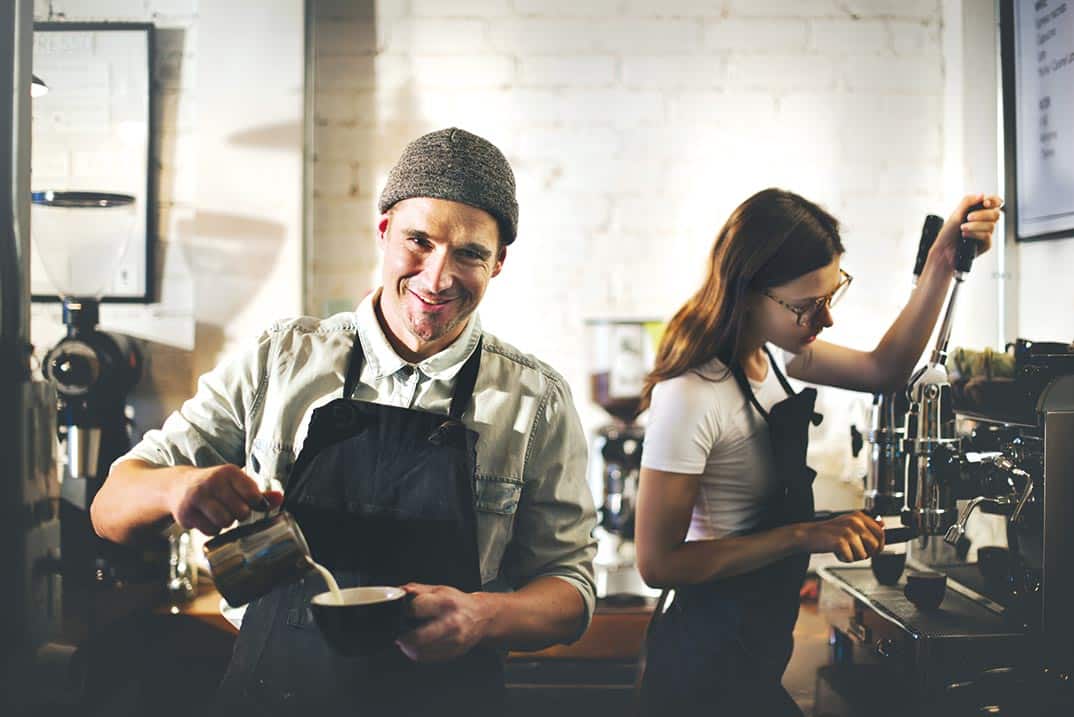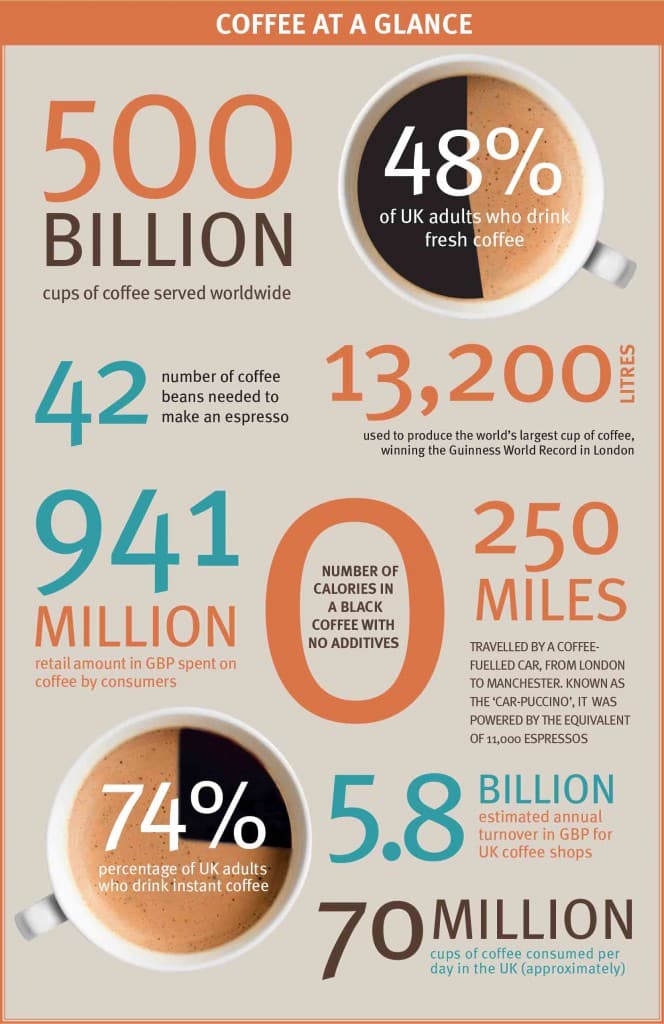This week, coffee operators, trade professionals and their customers are joining together in celebration of UK Coffee Week. The nationwide fundraising initiative highlights the vibrancy of British coffee culture, while raising valuable funds for communities that produce the nation’s favourite beverage.
According to the British Coffee Association, coffee is the second most popular drink worldwide after water; indeed, around 2billion cups are consumed every day, 70million of which are enjoyed here in Britain. And with the rise of initiatives like the Fairtrade Foundation, people’s exposure to exactly what they’re drinking and where it comes from has never been such a hot topic.
To help you get to grips with the ins and outs, we’ve put together a beginner’s guide to understanding a bit more about the caffeinated craze. From different regions and growing conditions to popular types and fun facts, you’re sure to find some knowledgeable nuggets to impress your friends over that next cuppa and catch-up…
COFFEE GROWING
The fruit from coffee trees are green when young, turning yellow and then red when the beans (the two seeds inside) are ready for harvesting. The coffee plant prefers cool, moist, frost-free climates found at higher altitudes in the tropics and subtropics, with optimum growing conditions including a temperature of around 24°C, a well-distributed annual rainfall of about 50 inches and fertile, deep, well-drained soil. The coffee tree will start to bear fruit three to four years after planting and will yield its maximum sometime between its fifth and 10th year, bearing fruit for up to 30 years.
COFFEE REGIONS
While coffee production is big business all over the world, beans are primarily cultivated within 1,000 miles of the Equator, from the Tropic of Cancer in the north, to the Tropic of Capricorn in the south. Central and South America are responsible for two thirds of the world’s supply. Brazil, Columbia and Vietnam are the most prolific suppliers on the planet, with Brazil accounting for around 30% of the world’s total. Elsewhere, coffee is grown in more than 50 countries worldwide and is the second largest export on Earth, in dollar value, after oil.
COFFEE BEANS
The two main types of coffee bean produced for commercial purposes are Robusta and Arabica. The former has low acidity and high bitterness and is largely produced in Vietnam at lower altitudes, while the latter is better suited to higher altitudes, originating from Ethiopia. Arabica is believed to be the first species of coffee to be cultivated and of a higher quality than Robusta, despite containing half the amount of caffeine. Arabica represents 59% of the world’s coffee production, with Robusta accounting for approximately 30%, which has a greater crop yield, more antioxidants and is less susceptible to disease.
COFFEE TYPES
AMERICANO
– hot water added to espresso. Strength is determined by how many espresso shots are added (usually single or double combined with between one and 16 fluid ounces of water)
CAPPUCCINO – espresso, hot milk and steamed milk foam. Similar to a latte, it is typically smaller in volume with a thicker layer of foam and is often topped with cinnamon
ESPRESSO – coffee brewed by forcing a small amount of nearly boiling water under pressure through finely ground and compacted coffee beans. Thicker and more concentrated in flavour than other coffees
FILTERED COFFEE – hot water passed slowly over roasted, ground coffee beans contained in a filter. Also known as ‘drip brew’, it requires a finer grind of coffee than a cafetière
FLAT WHITE – steamed milk and espresso. Similar to a cappuccino or a latte, but smaller in volume with a higher proportion of coffee to milk and a more velvety consistency
FRAPPÉ – foam-covered iced coffee, usually made from instant or spray dried coffee. Initially popular in Greece and Cyprus during the summer months, its availability has since spread across the globe
IRISH – coffee combined with whiskey, cream and sugar. The coffee is consumed through the cream, which in turn traditionally isn’t whipped, although modern brews are often sold with whipped cream
LATTE – espresso and steamed milk with a smaller amount of foam than a cappuccino on top. The ratio of espresso and milk generally tends to range from 1:3 to 1:5
MACCHIATO – espresso and foamed milk, with the former added to the latter, giving it a stronger, more aromatic flavour. Smaller than a latte or cappuccino and often a ‘layered’ drink
MOCHA – a variant of a latte, with one third espresso and two thirds steamed milk. A portion of chocolate is added, often in the form of a syrup or powder
UK COFFEE WEEK
Runs from April 11 to 17.
To find out more, visit www.ukcoffeeweek.com









